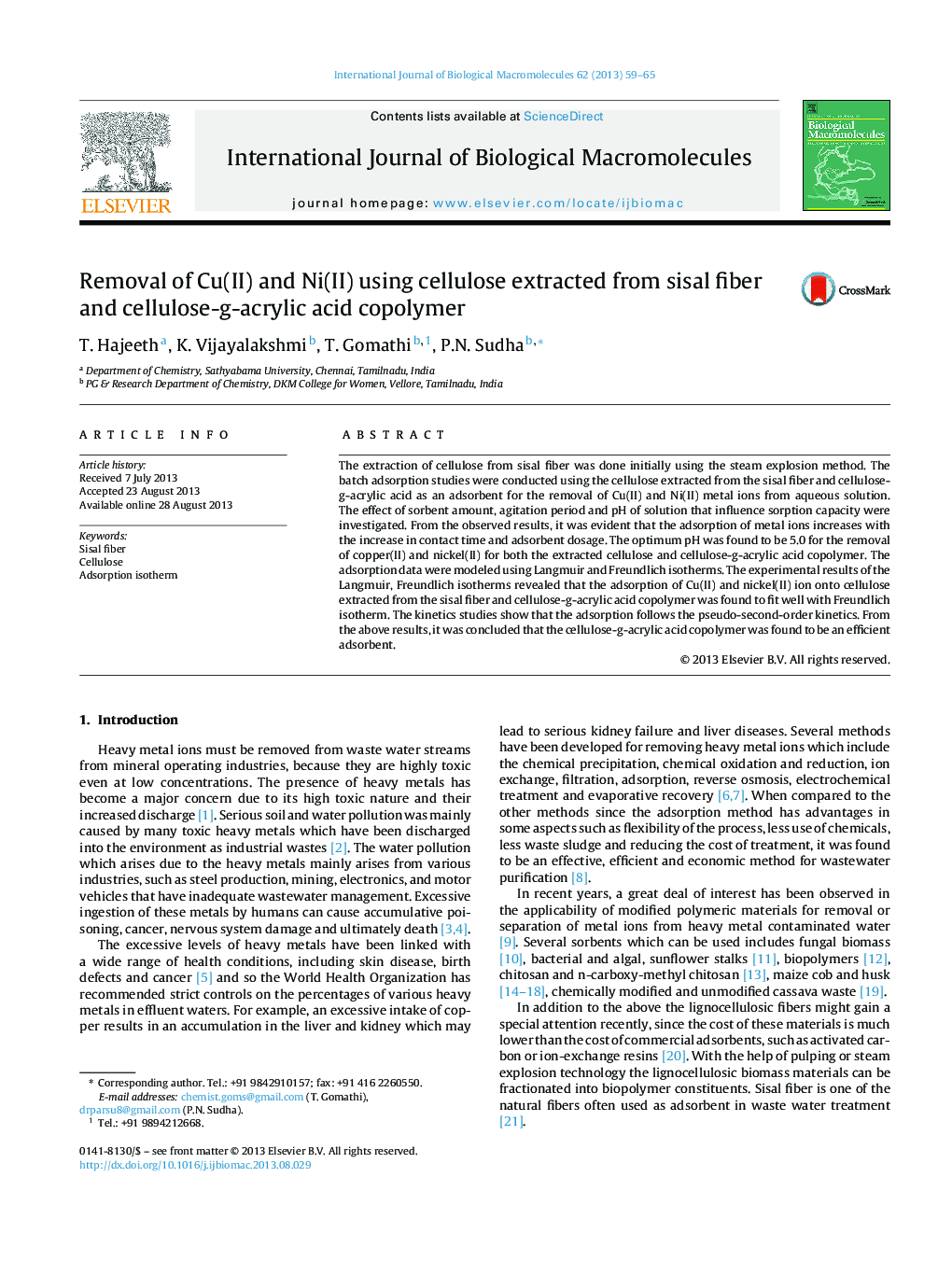| Article ID | Journal | Published Year | Pages | File Type |
|---|---|---|---|---|
| 1986881 | International Journal of Biological Macromolecules | 2013 | 7 Pages |
•Cellulose extraction from sisal fiber.•Novel copolymer-modified cellulose through grafting with acrylic acid.•Batch adsorption process for the removal of nickel and copper from the aqueous solution using cellulose and modified cellulose.
The extraction of cellulose from sisal fiber was done initially using the steam explosion method. The batch adsorption studies were conducted using the cellulose extracted from the sisal fiber and cellulose-g-acrylic acid as an adsorbent for the removal of Cu(II) and Ni(II) metal ions from aqueous solution. The effect of sorbent amount, agitation period and pH of solution that influence sorption capacity were investigated. From the observed results, it was evident that the adsorption of metal ions increases with the increase in contact time and adsorbent dosage. The optimum pH was found to be 5.0 for the removal of copper(II) and nickel(II) for both the extracted cellulose and cellulose-g-acrylic acid copolymer. The adsorption data were modeled using Langmuir and Freundlich isotherms. The experimental results of the Langmuir, Freundlich isotherms revealed that the adsorption of Cu(II) and nickel(II) ion onto cellulose extracted from the sisal fiber and cellulose-g-acrylic acid copolymer was found to fit well with Freundlich isotherm. The kinetics studies show that the adsorption follows the pseudo-second-order kinetics. From the above results, it was concluded that the cellulose-g-acrylic acid copolymer was found to be an efficient adsorbent.
